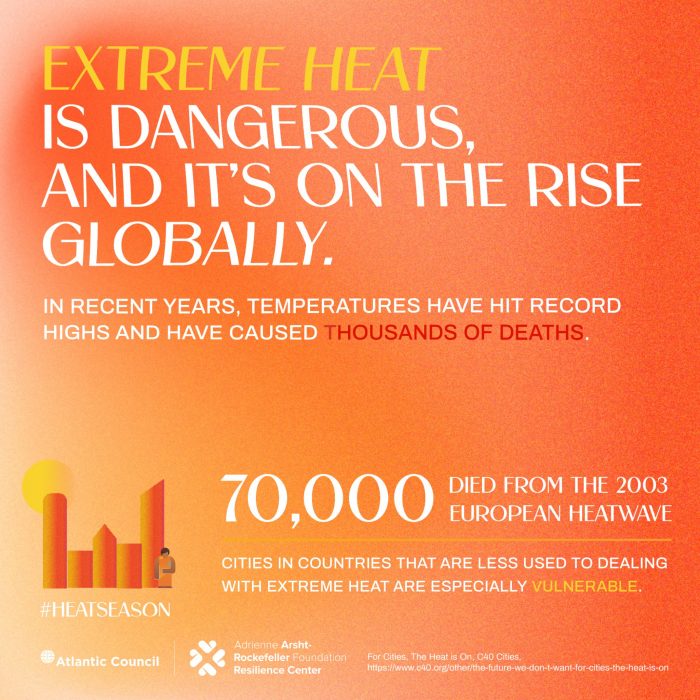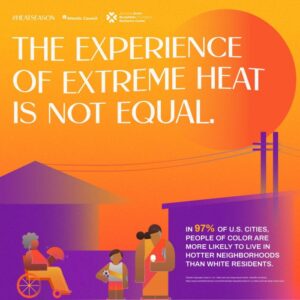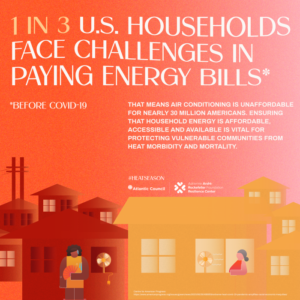10 facts about deadly heat
By Climate Champions | May 17, 2021
Europe experienced its hottest year on record in 2020 and the hottest decade ever recorded globally occured between 2010 to 2019. Global temperatures are only set to rise further.
Now more than ever, it is essential that governments act to reduce the risks to vulnerable people and communities posed by inevitable, yet deadly heatwaves.
To emphasize the importance of immediate action to save lives and protect people’s health, particularly in front of hurricane season, the Adrienne Arsht-Rockefeller Foundation Resilience Center (Arsht-Rock) has launched a Heat Season social media awareness campaign on May 1 that will continue through Heat Awareness Day on May 28 and end on May 31.
The idea is to inform people globally about the impact of extreme heat, not only as a climate change issue but as a serious threat to human health and wellbeing that will impact everyone, everywhere.
Here are some facts about extreme heat:
It is our problem today
Extreme heat is not a future problem. It is already here. The hottest decade ever was recorded from 2010 to 2019. Temperatures will continue to rise unless dramatic action is taken.

Heatwaves
A heatwave is a period in which temperatures are unusually high, becoming hazardous to our health. There isn’t one universal definition of heatwaves, because temperatures vary dramatically around the world, so a rise in temperature has differing impacts.
Health impacts
Prolonged exposure to extreme heat can affect the body’s ability to regulate its core temperature, which can cause – among many other issues – problems with circulation and result in unconsciousness or organ failure.
Devastating consequences
Climate change is causing global temperatures to rise, bringing with them dangerous heatwaves and record highs that have devastating consequences. Heatwaves cause more deaths than any other climate-driven natural disasters in the US.
Inequality
Extreme heat is a profoundly unequal experience. Youth and the elderly are at particular risk, as are those with preexisting conditions or disabilities. Racial and socioeconomic disparities also put some at greater risk of suffering from heat-related challenges.

Heat app
One solution that uses data and connectivity for communities is the @EXTREMA_proj app, which notifies you if you or a loved one is at risk from high temperatures.
Energy insecurity
The most common way to combat extreme heat is with air conditioning, but this seemingly simple solution is unaffordable or inaccessible for many, as this article points out. Energy insecurity is particularly prevalent among African American, Hispanic or Latino households as well as tribal communities.
Outside workers
Heat Season puts some people at a higher risk than others, including outside workers. Worldwide, there is a link between a country’s rate of working poverty, informal employment and subsistence agriculture and its prevalence of heat-related illness.

Cool roofs
Cool roofs provide an effective resilience to extreme heat. Reflecting sunlight and heat stops buildings from absorbing it, making them 28-33ºC cooler than traditional roofs. Installing reflective roofs and pavements can have a city-wide cooling impact.
Tree canopies
Planting more tree canopies is an affordable and effective way to support urban communities experiencing extreme heat. This nature based heat season solution reduces air temperatures, provides shade and reduces air pollution.
To find out more about the campaign, click here.




